Everything you need to know about dimorfoteka flowers
Walking along the rows of flowers, you can come across a flower, looking at which one question begs - can a chamomile be multi-colored? Of course not. Chamomile is white, it has always been and will be. And these are plants that really look like her, but differ in color, called dimorphote flowers.
Content:
- Description of diformatics
- Dimorphic types
- How does the seedling take place?
- How to care for a plant
Description of dimorphic
Dimorphoteka came to us from the hot fields of South Africa. And it is used both for planting in flower beds that decorate the site, and for gift bouquets. Dimorphoteka can be found only among sophisticated gardeners, despite the fact that it does not require special conditions.
On the contrary - courting her does not require more attention than any flower. Nevertheless, with a minimum of effort, such a result is obtained as a colorful bush of flowers shimmering in the sun.
The appearance of the flower can be characterized by the keyword of the name "dimorphos", which means "having two forms".
Indeed, the flower petals are of two types, alternating on the inflorescence. There are about twenty varieties of the plant today. But new and new ones constantly appear. new hybrids, as a result, ranked as a new variety. Initially, the main color was considered to be orange - yellow (golden). But as a result of repeated crosses, dimorphotes with white and purple petals were born. And that's not all.
Dimorphic types
There are two types of dimorphoteka:
- Rain dimorphote:
- This species is a bush of flowers with a straight stem.
- Height can reach about 40 centimeters. The shape of the bush resembles a hemisphere.
- Many branches extend from the stem, each of which ends in an inflorescence.
- The diameter of each inflorescence is about 8 centimeters.
- The petals, as befits all dimorphotes, are in two rows per inflorescence: one in the center; the other around the circumference. And alternate with each other every other time. The ones in the center have an orange-colored base. The second row of petals are white on the front and red on the back.
- Petals give off a delicious scent.
Notched dimorphote:
- The bush of this species has no shape due to the bisexual type of its flowers.
- The first type is petals with a color similar to golden. In their shape, they resemble tongues extending upward.
- The second is a tubular purple flower in the center of the bush. A feature of this species is the presence of petals of various colors at the base of the middle of the flower.
- Unlike rainwater, the notched dimorphoteka reaches a height of no more than 6 centimeters.
Dimorphoteka prefers to be on the southern side of the site, since the plant is light-loving.
Based on this, we summarize that the plant needs sunlight. As well as constant moisture maintenance. Seeds are poured into the ground at a distance of about 25-30 centimeters from each other, for proper thinning. This procedure is carried out no later than the last days of April.
How does the seedling take place?
To grow flowers in special flower beds and pots, it is necessary to carry out shallow sowing of seeds in special boxes. In other words, do not bury it deeply, but just sprinkle it a little with earth.Under no circumstances should the root system be disturbed. This is fraught with increased sensitivity and constant morbidity of the plant.
Little tricks for growing seedlings:
- The soil must be moist. Ideal for use - peat soil.
- Seedling occurs at the end of March.
- With proper adherence to the seedling conditions, the first shoots will be born in a week.
- Planting plant sprouts in the ground should be carried out when the probability of cold weather is minimized, and the ideal time for this is considered to be the end of May.
- The distance must be observed, as when planting in boxes - that is, no more than 25-30 centimeters (square).
- Growing in greenhouses takes place at a temperature not exceeding 16 degrees. And the first shoots can be seen in a week.
- The obligatory attention to the root system must be taken into account.
- After the sprouts appear, they are planted in peat pots. Including three sprouts per pot.
- And at the end of May, when all the frosts and cold are already behind, the sprouts are planted in the ground.
The slightest carelessness when planting is fraught with a long recovery of the plant. And even after the plant recovers, then normal colorful bush will not come out of it.
Only strong, stable seedlings go into pots for transplanting.
Despite this, most of them will not survive. Based on this, we can summarize - the seedlings should be carried out in one specific place, without constant transplants.
How to care for a plant
Caring for a dimorphoteca is no different from caring for any other regular flower.
It is enough just to carry out loosening, watering and weeding. The flowering period for Dimorphotek lasts from July to September. And the blooming of a flower, which is certainly an unforgettable sight, occurs only in sunny weather. If the weather is cloudy, then you shouldn't even hope. The bud will never bloom, remaining closed.
To prolong the flowering of the dimorphoteca, it is necessary to prune the inflorescences that have already faded. And don't forget to water the plant. By the way, it is important to know that Dimorphoteka does not care about the autumn cold snap.
Correct watering:
- It only happens if the soil is already dry enough.
- And regularity is inherent in watering dimorphoteka. But don't do it often.
- A sign that you are over-watering is the appearance of gray rot on the plant.
- In addition to watering, it is necessary periodically feed the plant... Mineral fertilizers are ideal for this.
Dimorphoteka is a pretty hardy plant.
But, nevertheless, it is important to know what can do harm and even destroy the flower:
- Excessive watering
- Inattention to the root system
- Spring cold and frost
- Frequent transplant
- Failure to comply with the required distance when landing
More information can be found in the video.



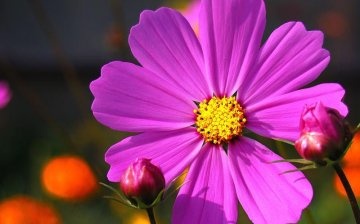
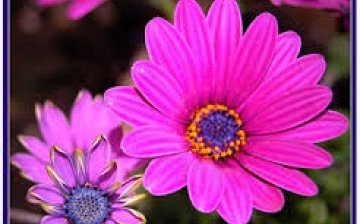
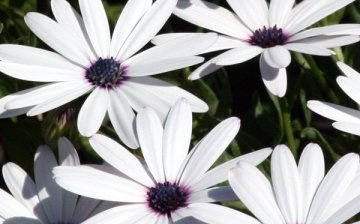

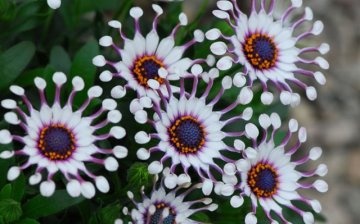





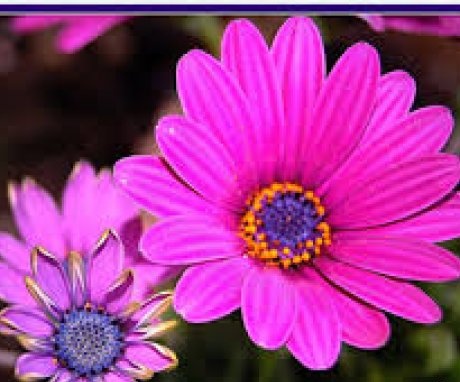
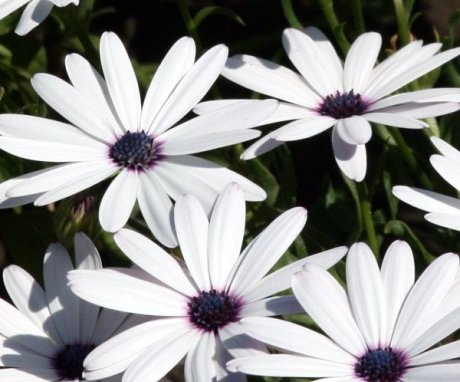
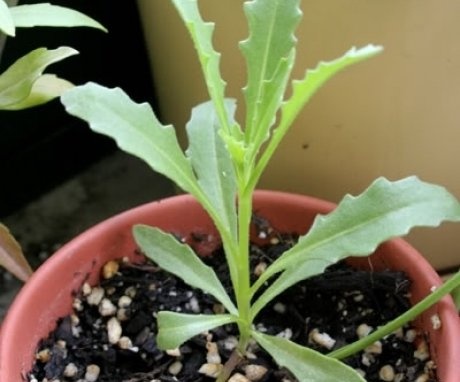

This is the second year I have been growing a rain-fed demorphosis. I hesitated for a long time before buying seeds. As a result, I bought it and never regretted it. It pleases me and all passing mimios with their abundant flowering for a very long time. Leaving is minimal in principle, but how many pleasant moments the contemplation of such beauty gives